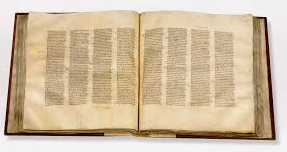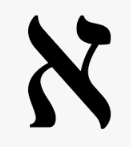|
Getting your Trinity Audio player ready...
|
The grass withers, the flower fades, but the word of our God will stand forever (Isaiah 40:8, ESV).
AD 330: After Roman Emperor Constantine legalized Christianity, he ordered 50 copies of the New Testament to be completed and sent throughout the empire.
Note: An archeologist named Indiana Jones in the movie “Raiders of the Lost Ark” pitted himself against notorious Nazis in the search for the Lost Ark of the Covenant, an artifact thought and proven (in the movie) to contain supernatural power. Fortunately, the good guys won!
There is a Bible manuscript that contains all the books of the New Testament. Written in Greek, it’s the earliest known complete book of the New Testament (all 27 books).
Wow. Let’s watch the plot of the manuscript’s discovery.
The main character in the search for this manuscript is Count Tischendorf (not Harrison Ford) from Germany (but a good German), and the location is St. Catharine’s Monastery (the world’s oldest continuously functioning monastery) at the foot of Mt. Sinai in Egypt.
Can we get a better name for a Bible hero than Count Tischendorf and a more mysterious location than St. Catharine’s (built on the site of the burning bush) in the shadow of Mt. Sinai (where Moses received the Ten Commandments)?
This is why I call the Codex Sinaiticus (official name of the manuscript) . . . The Indiana Jones Bible Manuscript. And it’s discovery — a great story of adventure.
Count Tischendorf first visited St. Catharine’s in 1844, where he noticed 43 pages of an ancient manuscript in a rubbish bin that the monks were using to stoke their fires. Rescuing these pages, he took them (some say smuggled) back to Germany for study, finding them to be Old Testament pages from the Greek Septuagint.
But Count Tischendorf had heard hints of an even greater manuscript while visiting St. Catharine’s in 1844, so in 1859 he went back for further research. Almost ready to give up, on his last night at the monastery, a monk took a red cloth-covered manuscript from his closet and gave it to Tischendorf.
 After looking at the manuscript, Count Tischendorf wrote about this moment later in his autobiography, “I knew that I had in my hands the most precious Biblical treasure in existence.” The manuscript became known as the Codex Sinaiticus, one of the most influential Bibles in the world, originally written about AD 350, probably under the direction of Emperor Constantine.
After looking at the manuscript, Count Tischendorf wrote about this moment later in his autobiography, “I knew that I had in my hands the most precious Biblical treasure in existence.” The manuscript became known as the Codex Sinaiticus, one of the most influential Bibles in the world, originally written about AD 350, probably under the direction of Emperor Constantine.
The manuscript’s history of leaving Mt. Sinai to Egypt for further examination, being transferred to Russia and presented to Tsar Alexander as a gift, and finally being sold by Stalin to the British Library in 1933, where it resides today, adds layers of mystique to the Codex Sinaiticus.
 Now, when scholars refer to the Codex today, they use the “Aleph” symbol, which is the first letter of the Hebrew alphabet. This symbol lends significance to the manuscript’s importance.
Now, when scholars refer to the Codex today, they use the “Aleph” symbol, which is the first letter of the Hebrew alphabet. This symbol lends significance to the manuscript’s importance.
I believe the Codex Sinaiticus gives testimony to the miraculous preservation of Scripture through the centuries by the Spirit, so that those reading the Bible today can know that it’s the Word of God.


Amen!